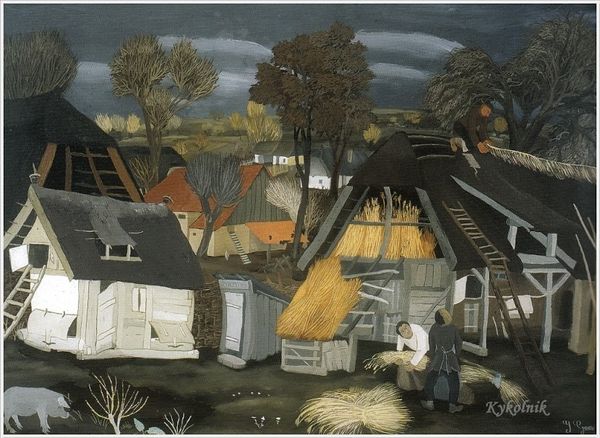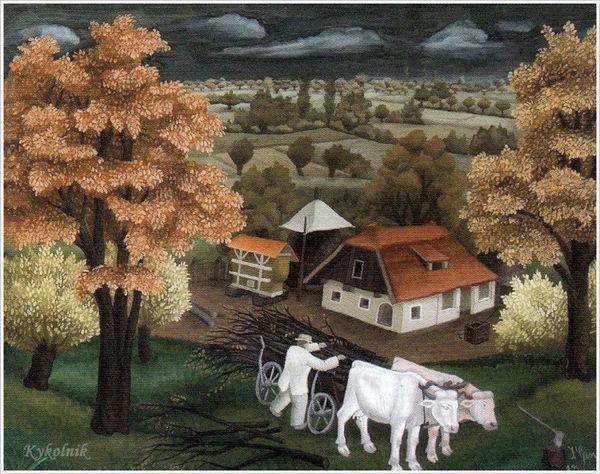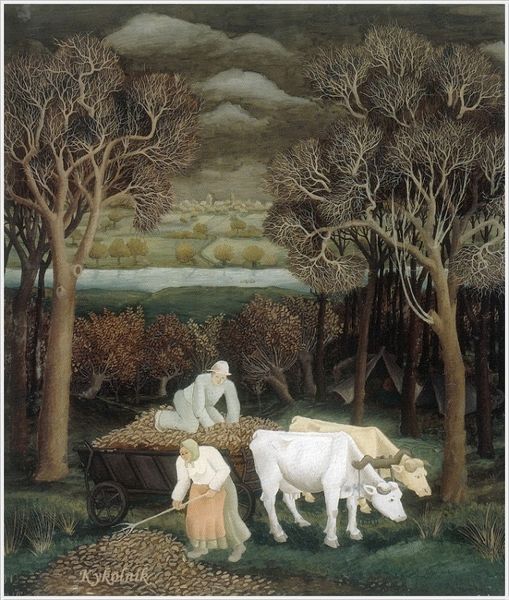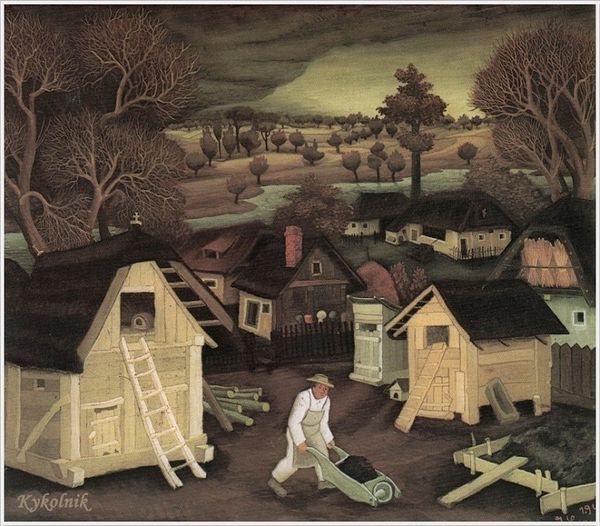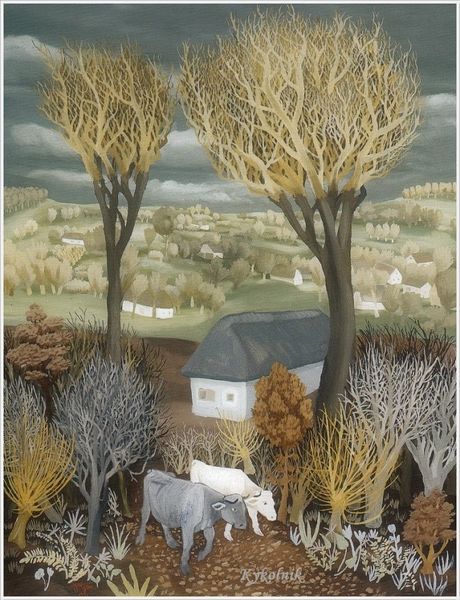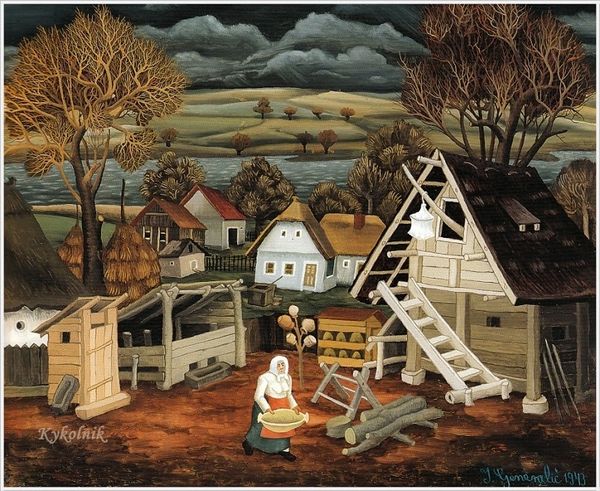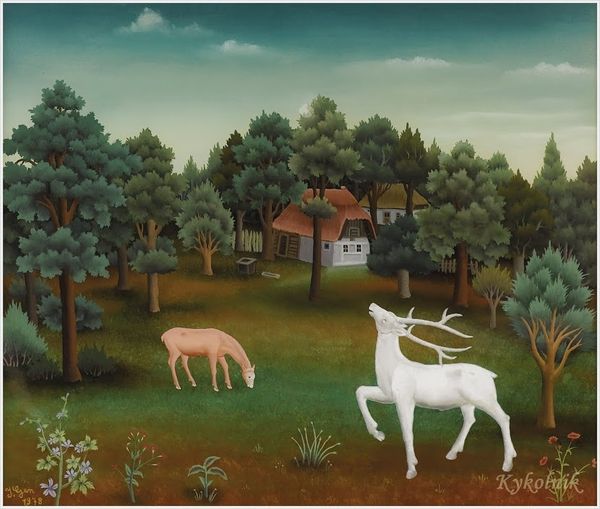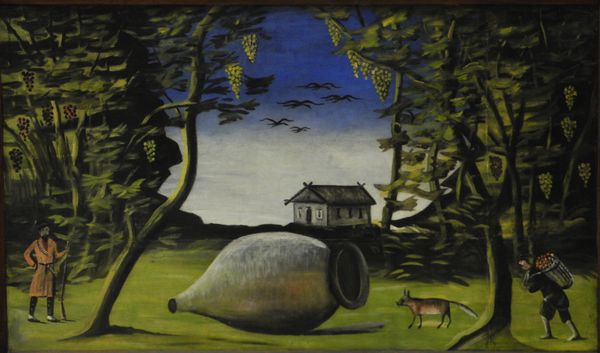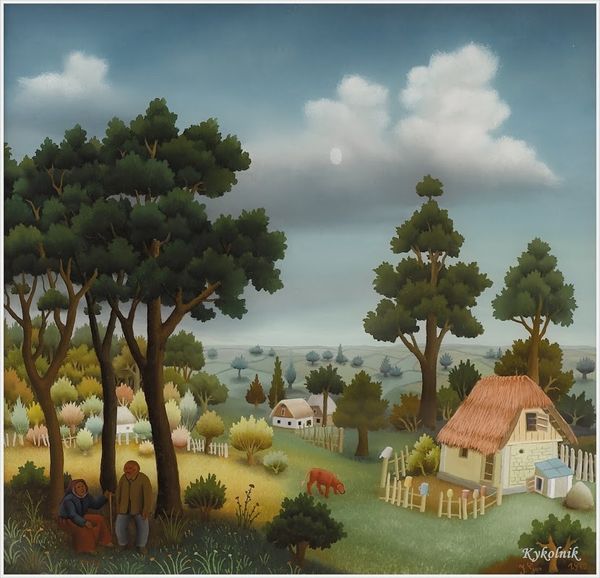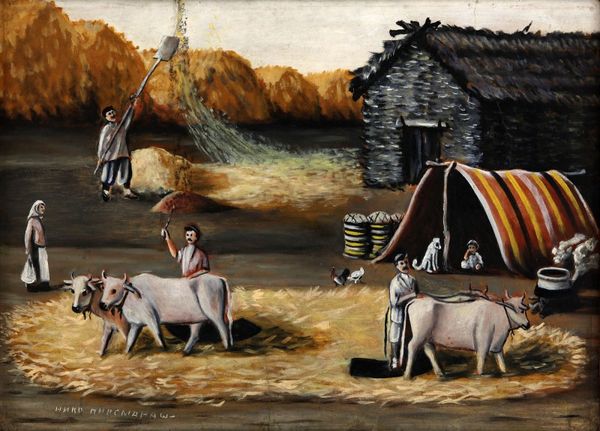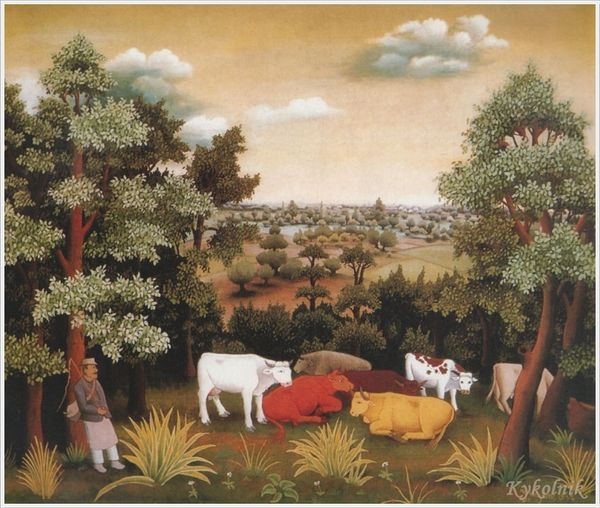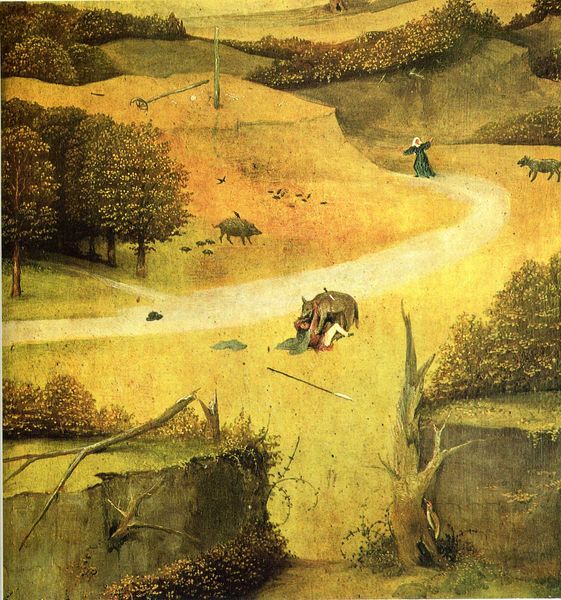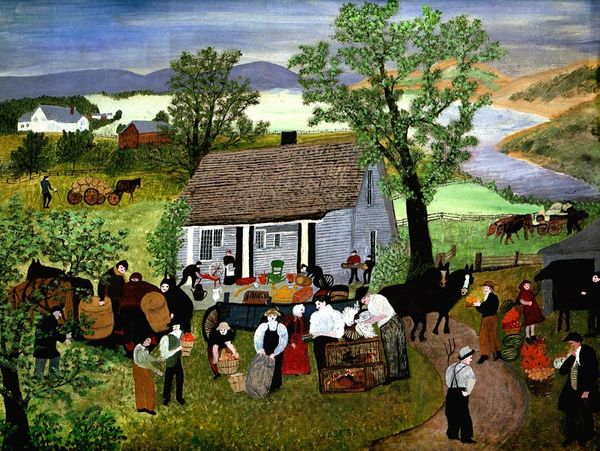
Copyright: Ivan Generalic,Fair Use
Editor: This oil painting, "Djuras backyard," was created in 1939 by Ivan Generalic. The scene depicts a rather humble farm setting. I get the sense of quiet solitude, even perhaps some underlying economic tension in the wear of the structures. What stands out to you in this piece? Curator: It's fascinating how Generalic, emerging from the Hlebine School, used so-called naïve art to express very sophisticated socio-political commentary. Consider the date, 1939, on the eve of World War II. The seeming simplicity of rural life, the focus on the everyday, becomes a quiet form of resistance. Do you notice how the subdued palette and the slightly flattened perspective, avoids idealizing peasant life? Editor: Yes, there's almost a starkness. I hadn't really placed it in its historical context, and I appreciate that it may suggest deeper significance in a European reality soon facing invasion and oppression. So it's not just a quaint scene; it's more of an assertion? Curator: Exactly! And that man walking off to the right—is he going off to war, or simply carrying out some task that has preoccupied workers across time? Generalic may be suggesting the quiet dignity of that enduring peasantry by portraying it as not picturesque. It subtly champions the everyday life, against encroaching societal pressure. Editor: That makes me reconsider the whole composition, the value of labor and the role of rural populations that can all be so easily ignored. So, I see it going beyond the surface now and understand the assertion. Thank you. Curator: Of course. It's about peeling back layers and questioning whose stories are being told and how. The visual and the socio-political become intertwined, challenging established artistic conventions.
Comments
No comments
Be the first to comment and join the conversation on the ultimate creative platform.
